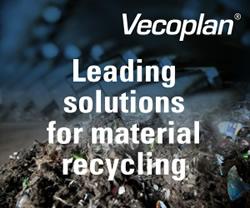Using Renewable Energy for LEED Certification

Growing knowledge of energy consumption’s environmental impact has led to a sharp increase in demand for sustainable buildings. This shift has made sustainable certifications — like the LEED certification — a major draw for renters and investors.
In some cases, the right eco-friendly certifications can even significantly increase buildings’ value. Future homeowners, investors and businesses may all see the value of a building that will help them reduce their carbon footprint.
However, it can be challenging to make enough changes to a building to qualify for LEED certification.
Renewable energy systems for a building can count toward LEED certification — potentially making it easier to get a building LEED-certified.
Earning LEED Points With Renewables
Under the LEED v4 scoring system, eco-friendly upgrades secure a building additional points. The building will qualify for certification after earning a specific number of points.
Higher point totals earn different levels of certification. Forty to 49 points out of a possible 110, for example, is enough for basic LEED certification. Eighty to 110 will qualify for the highest LEED rating level, platinum certification.
Under current LEED standards, building owners can earn points both for on-site generation and use of renewable energy.
However, there’s a relatively low threshold for points with the standard LEED scoring metric. A building can only earn three points total for renewable energy usage. Generating power can net a building an additional five points.
As a result, a new building that uses 100% renewables for energy production will earn the same three points as a building with a retrofit solar array that produces only 10% of building energy.
However, for building owners who want to commit to a major investment in renewables, it is possible to earn more points with sustainable energy sources. Instead of using the standard option for measuring building energy efficiency — which primarily rewards improvements — the U.S. Green Building Council also offers an Alternative Energy Performance Metric that may provide additional points.
Under this metric, reductions in greenhouse gas emissions and the use of renewables can count toward a potential 21 points — more than half the points needed for a baseline LEED certification.
For building owners who want to secure the potential health benefits and cost savings that can come with LEED certification, renewables may have other benefits. For example, a solar system can be a great way to further cut back on a building’s energy consumption. A geothermal power system can similarly reduce energy consumption and individual reliance on fossil fuels.
Limitations to Renewable Energy for LEED Certification
There are some limits to what counts as renewable energy under LEED standards. Right now, according to the LEED Reference Guide for Building Design and Construction, only the following energy sources can count toward the renewable energy credit:
- Photovoltaic solar
- Solar thermal
- Wind
- Low-impact hydroelectricity
- Wave and tidal energy
Biothermal and geothermal energy will also count toward the renewable energy points, but only under some circumstances. For example, biofuel energy doesn’t count as renewable if a building is burning “forest biomass waste other than mill residue” or “wood coated with paints, plastics or laminate” for energy.
Renewable Energy Can Help Secure LEED Certification
LEED certification can provide some major benefits to building owners and construction companies. It’s a quick and trustworthy way to demonstrate that a building has a lower-than-average environmental impact — a quality that can be a major draw in the modern real estate market.
Specific renewable energy systems can help building owners and construction companies work toward LEED certification. With a sufficiently powerful system, it’s possible to earn a significant number of points toward certification — in addition to the other benefits renewable systems can provide.
Author bio:
Jane works as an environmental and energy writer. She is also the founder and editor-in-chief of Environment.co.
Comments (0)
This post does not have any comments. Be the first to leave a comment below.
Featured Product

